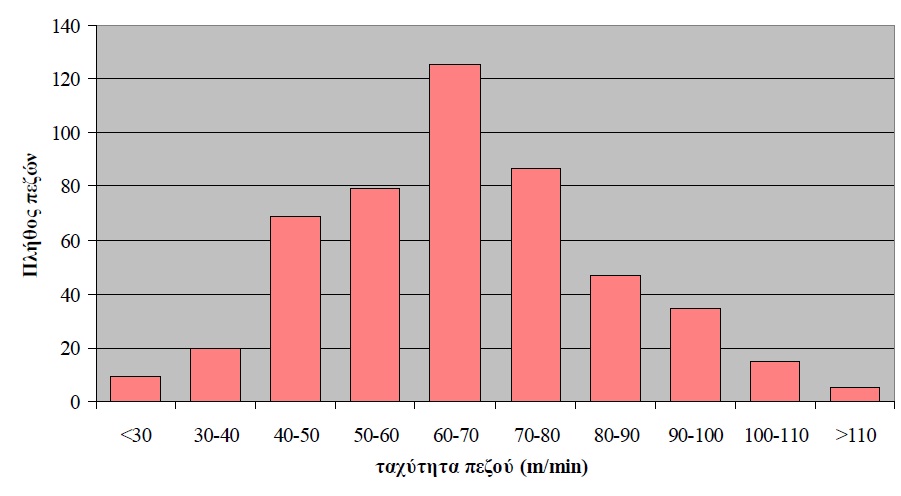
The objective of this research is the analysis of pedestrians behaviour along entire trips in urban road networks, with focus on their interaction with the traffic and the road environment while crossing roads. For this purpose, a special field survey was designed and carried out, which involved the recording of pedestrians road crossing behaviour along entire trips in real time by means of camera in motion at the centre of Athens. Based on the results of the field survey, an analysis of road crossing behaviour of pedestrians is presented, concerning characteristics of the trips, the pedestrians, the road environment and the traffic conditions. The results reveal a tendency of pedestrians to cross either in the beginning or in the end of the trip, an increased probability of crossing at signalized junctions when these are available, and increased probability of crossing at mid-block in low traffic volume and on one-way roads. There is an overall tendency of pedestrians to cross at mid-block when the road and traffic conditions are favourable. On the contrary, more traffic lanes and increased traffic volume appear to discourage pedestrians from accepting important interaction with the vehicles and to lead them to the choice of protected crossing locations. The proposed data collection method and the results of the analysis can be exploited in further research for the development of models of pedestrian crossing behaviour along entire trips in urban areas.
| ID | pc109 |
| Presentation | |
| Full Text | |
| Tags | driver behaviour, pedestrians, statistical modelling, traffic management |













